
Collaborative Creativity
The Participatory System Mapper (PRSM) is an app that makes it easy to draw networks (or 'maps') of systems, working together collaboratively

Groups of people, each using their own computer (or tablet) can collaborate in the drawing of a map using PRSM.
They may be sitting around a table, discussing the map as it is created face to face, or working remotely, using video conferencing or the chat feature that is built into the app.
Everyone can participate because every edit (creating nodes and links, arranging them, annotating them, and so on) is broadcast to all the other participants as the changes are made.
PRSM runs in a web browser on a desktop PC or a tablet.
When you start PRSM in your browser, a 'room' is created for you in which to draw your network. You can add other users to this room to share the work. Only those with access to the room can see what is being created.
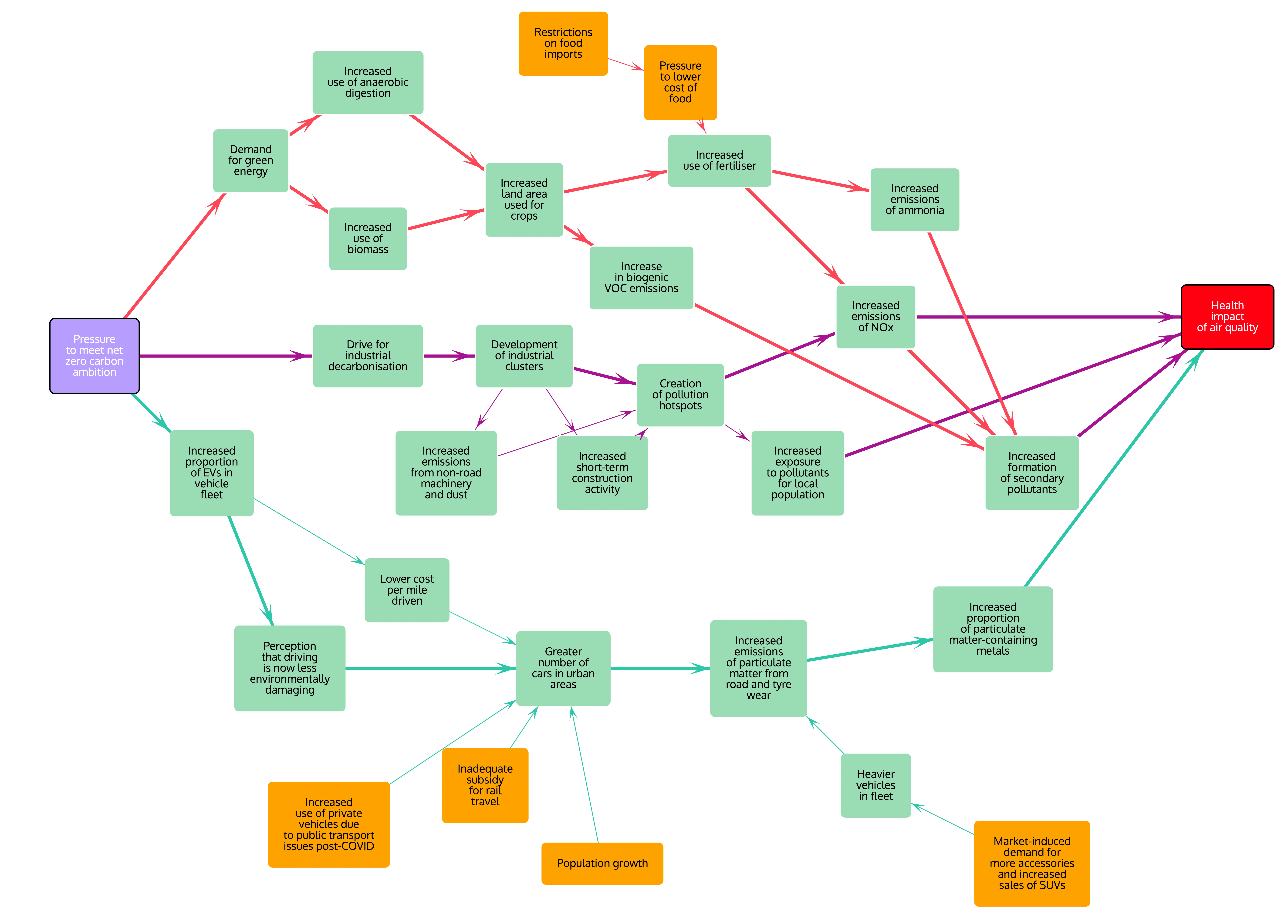
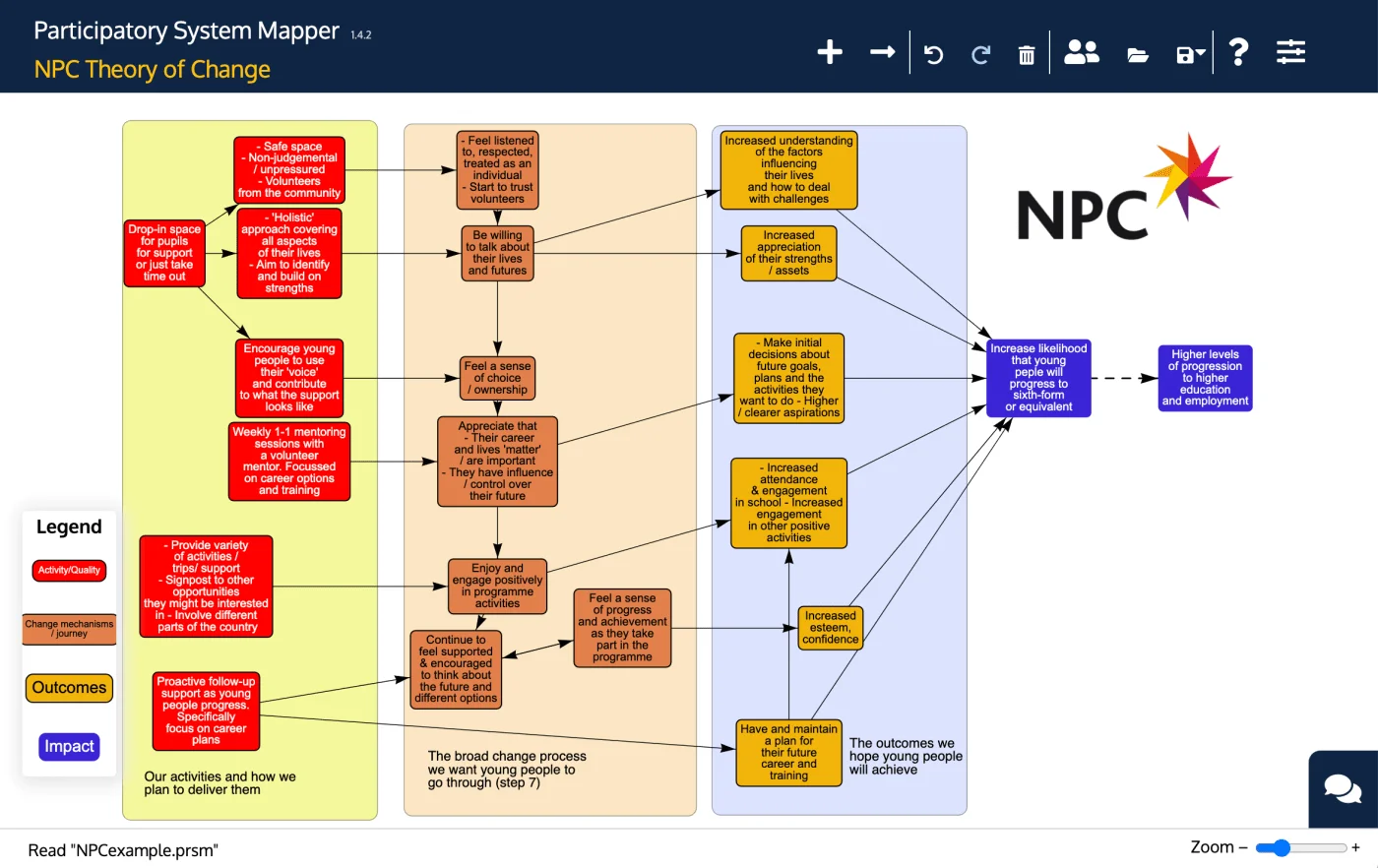
What can you map?
The network or map can be anything that has items (or 'factors' or 'nodes') connected by links (or ‘edges').
- People (the nodes) connected by knowing each other (e.g. a stakeholder map)
- Factors or variables causing (the links) changes in other factors (e.g. a causal loop diagram)
- Theories expressed as variables and relationships between them (e.g. a Theory of Change)
- Company boards of directors (the nodes) and the directors that sit on more than one board (the links) (e.g. interlocking directorates )
- Twitter hashtags (the nodes) included together on posts (the links) (a hashtag network)
- Scientists (the nodes) co-authoring or co-citing papers (the links) (e.g. a co-citation network)
Data view
In addition to the 'map' view, PRSM will also show a data view: a spreadsheet with one sheet for all the factors and and another for all the links. Each row describes a factor or link, and these can be edited from the data view as well as from the map view. The data view also shows some network statistics (degree, betweenness centrality etc.) and this view can be used to assign values to factors for analysis.
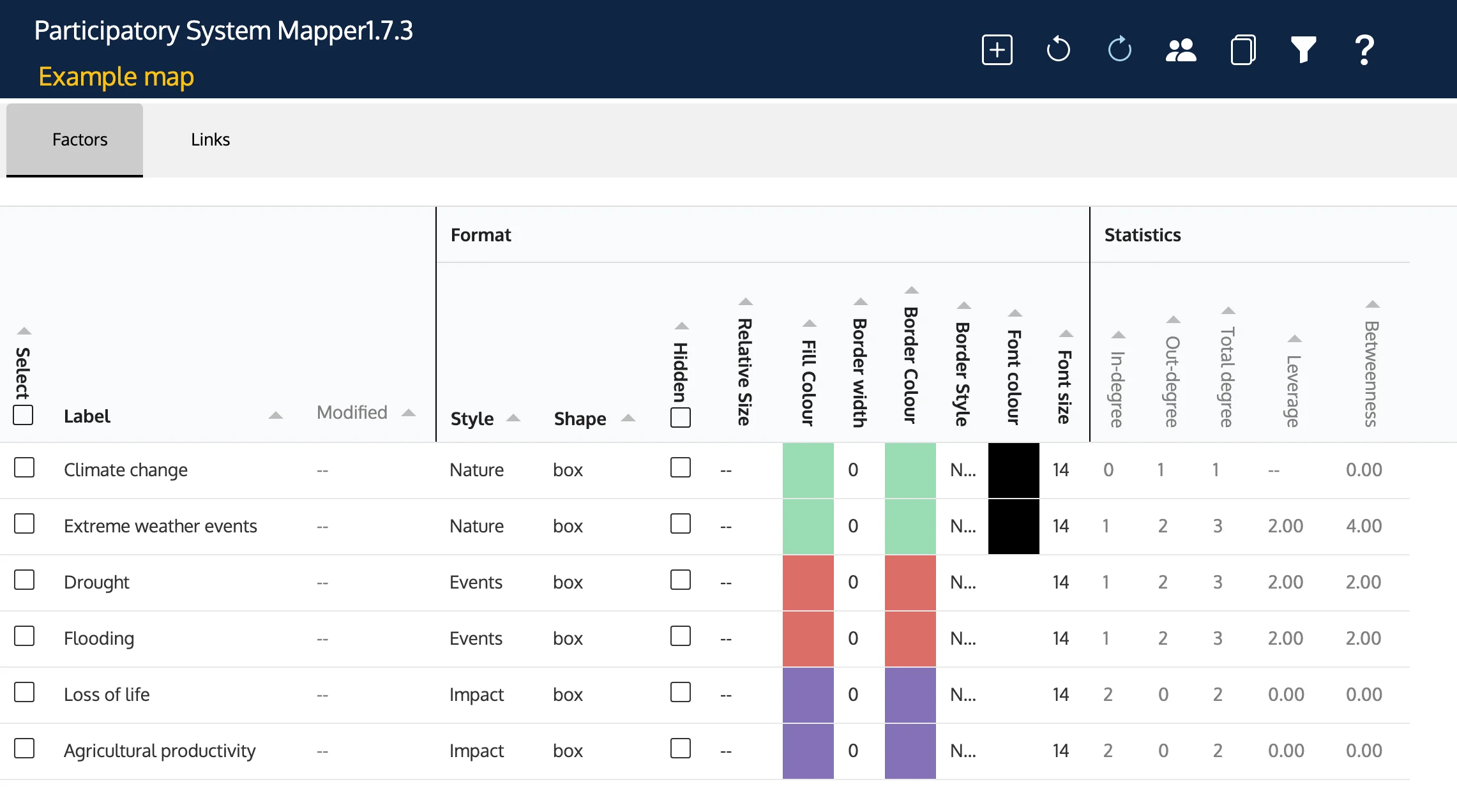
To use PRSM , all you need is a modern web browser such as Chrome, Firefox, Microsoft Edge or Safari running on a desktop, tablet or phone.
It will not work with Internet Explorer.

Laptop
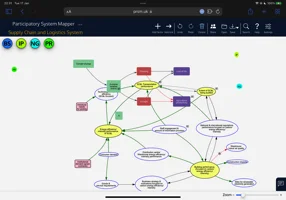
Tablet

Phone
The software is free and open source .
Integrity
Designed, shaped and coded by experts with an emphasis on security and ease of use
PRSM is secure — the only way to gain access to a map is if you have the web address of the shared ‘room’, a random string of 12 letters.
PRSM is GDPR compliant: for details see our privacy notice .
Encoded data is transmitted between users using a server located in Ireland, and so does not leave the jurisdiction of the GDPR. You can also install the server on your local intranet if you wish. You can save maps to your local computer in PRSM’s own format, save an image of the network, or export maps to Microsoft Excel or in one of several standard network formats.
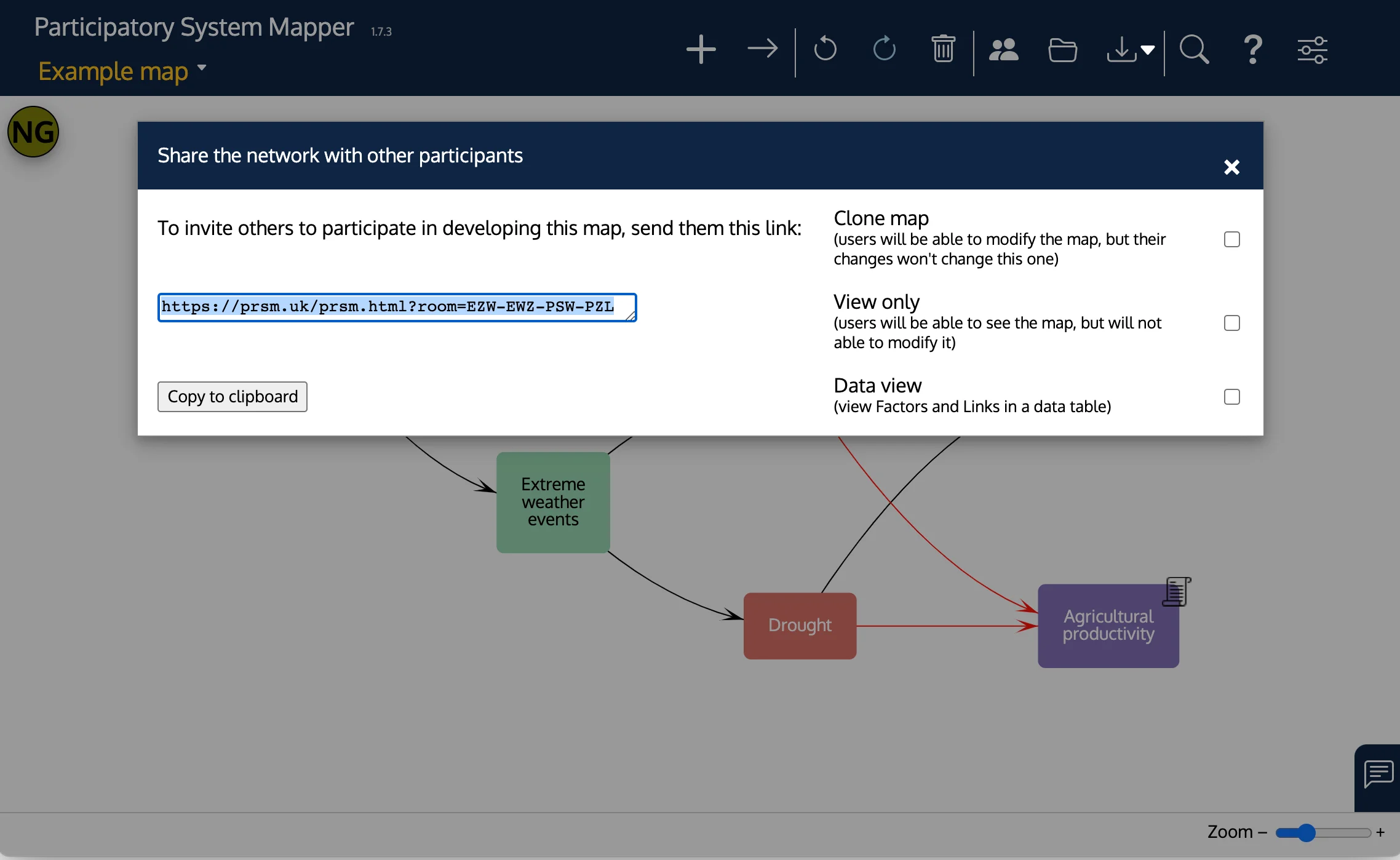
Our Story
The Centre for the Evaluation of Complexity Across the Nexus (CECAN) was founded in 2016 as an ESRC research centre, with the aim of 'transforming the practice of policy evaluation across the food, energy, water and environmental domains to make it fit for a complex world'. Since then, CECAN has worked closely with UK government departments and others and has developed a methodology for creating participatory system maps. These maps were thought to be very helpful to those who worked on them — policymakers, policy analysts, and stakeholders in public policy — but it was laborious to digitise the paper and Post-It™ notes that were used in mapping sessions. We therefore began investigating the possibility of asking participants to use mapping software.
Shortly afterwards (early 2020), the COVID-19 pandemic meant that the kind of face-to-face mapping workshops we had been organising were no longer feasible. Over the course of 2020, we developed PRSM and somewhat hesitantly tried it out with some pilot workshops. Gradually, the reliability and capability of PRSM improved, and we learned how to run system mapping workshops online, which requires somewhat different strategies than face-face workshops. The core of PRSM is now stable and well tested, but it continues to be extended to add further features.
PRSM would like to thank...
all who helped inspire, suggest features for and test PRSM, including Pete Barbrook-Johnson, Paul Brand, Brian Castellani, Linda Gessner, Robin Gilbert, Kevin Jahns, Robert MacKay, Kavin Narasimhan, Alex Penn, Bazil Sansom, Helen Wilkinson, and many others.
PRSM was designed and written by Nigel Gilbert .